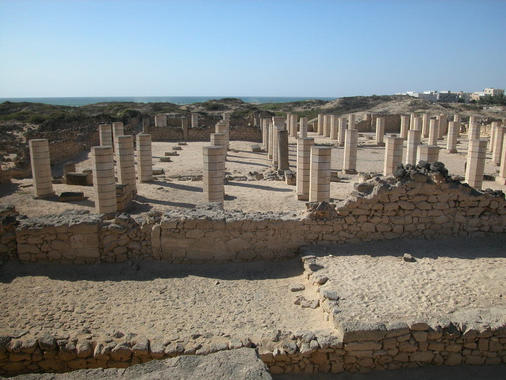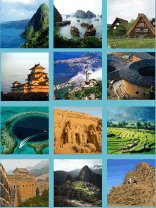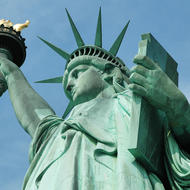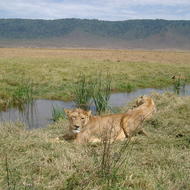Guide 9 – Case study: Land of Frankincense (Oman)
Baseline situation
The Land of Frankincense (LoF) World Heritage site is composed of four archaeological sites related to the antique trade of Frankincense and other luxury items across the Dhofar province of Oman: Shisr (sometimes called Wubar); Sumhuram; Al Baleed; and Wadi Dawkah.
LoF has two primary management problems to deal with – the fairly substantial archaeological remains require specialist investigation, analysis, and conservation; all of these activities also require funding.
What did they do?
The matter of conservation is pivotal to the preservation of the World Heritage site’s Outstanding Universal Value (OUV), and the LoF is fortunate the government currently provides a fairly healthy contribution to the upkeep of the site. However, LoF has also initiated a scheme of ‘self-financing’ to ensure that conservation efforts remain funded even beyond the government contribution, with the ultimate goal of becoming self-sufficient.
To enable to long-term conservation at LoF, Sultan Qaboos University (SQU) in Muscat, Oman, has developed a co-operative relationship with German academic institutes to offer conservation training to resident Omanis. Additional costs, such as research and ongoing excavations, have also been raised through crowdsourcing.
Strategic priorities
- Implementing self-sustainability through tourist income.
- Conserving the archaeological sites that represent the ‘Land of Frankincense’ – the Frankincense trees that grow in the region, which are also related to antique trade heritage, are a conservation concern.
- Minimizing visitor damage to the archaeology.
- Capacity building at a local level so that Omanis can carry out conservation and other specialist activities.
- Ongoing research and excavation at the World Heritage site to improve knowledge and education about the Frankincense and luxury good trade across the Arabian Peninsula.
What worked?
Although the model of self-financing is not yet self-sufficient, the strategy still represents a good example of such an effort. Entrance fees and monies made through the selling of goods related to the heritage site, namely frankincense, are used to fund personnel at the World Heritage site and contribute to other conservation and maintenance costs – the site is not used to turn a profit.
SQU in Muscat, Aachen University, and the German Academic Exchange Service have joined forces to establish an architectural study programme at SQU – over forty young Omanis have now been trained in conservation and site management. Training local specialists is more sustainable in the long term as sites can rely on local, or even resident, specialist talent, rather than paying foreign freelance fees, which are often expensive.
Crowdsourcing has also been successfully used to finance further research and excavation at Al Baleed Archaeological Park. In 2013 a campaign was launched on the crowdsourcing website ‘Indiegogo’ to raise funds for field and laboratory supplies for ongoing excavations. Almost twice the required amount was raised: the target was $1900, and a total of $3350 was collected. Obviously such success through a medium that depends solely on public donations is not guaranteed, but Al Baleed represents one example that demonstrates the potential value of this investment platform.
What was tough?
Putting in place a system of self-sustainable finance has clearly been a challenge. Efforts have been ongoing for more than 10 years, and, although headway has been made, the site is not yet operating in a self-financed capacity. Providing the appropriate training to staff at the World Heritage site has also been a challenge; the need for conservation has already been emphasised, but visitor management is also important at a Site with such extensive archaeology. Furthermore, with more than 100,000 annual tourists – a high of 480,000 was recorded in 2008 – this will become increasingly tough for the World Heritage site.
How did they get buy-in?
The undeniable archaeological value of the LoF, the draw it has for tourists, and the need for conservation in order to keep this site’s OUV intact are they key reasons for government funding – elsewhere in the world similar criteria may attract private funding or investment. Offering young people new learning and career opportunities, and other local business (e.g. those trading in frankincense and myrrh produce) opportunities to sell to a wider customer base have also been instrumental to the ongoing success of this site.
What are the results?
The Land of Frankincense experiences two main types of tourism – so-called ‘kharif tourism’, during monsoon season, and international tourism. In 2011, the income from both these forms of tourism was judged to be enough to cover conservation costs at the archaeological parks, as well as representing a major source of income across the Dhofar region. Although not yet self-sustainable, raising enough through tourism to cover such an important aspect of the World Heritage site’s upkeep is a significant step to have successfully achieved.
With the assistance of international experts, more than forty young Omanis have been trained in conservation and site management. This capacity-building also contributes significantly to the ongoing sustainability of tourism at the Land of Frankincense World Heritage site.
What lessons can others take from this?
Self-sustainability is the ultimate goal for World Heritage sites, although it may be more difficult for some – particularly those that are not equipped for, or are without, the capacity for accommodating tourists. However, any site with a consistent number of paying tourists can design a strategy for self-sustainability, dependent on factors such as costs of upkeep, staff, security, etc. The Land of Frankincense World Heritage site also illustrates that – no matter how secure a funding stream may appear – it is always wise to have contingency measures in place.




